Juf, mijn tekening is verpest
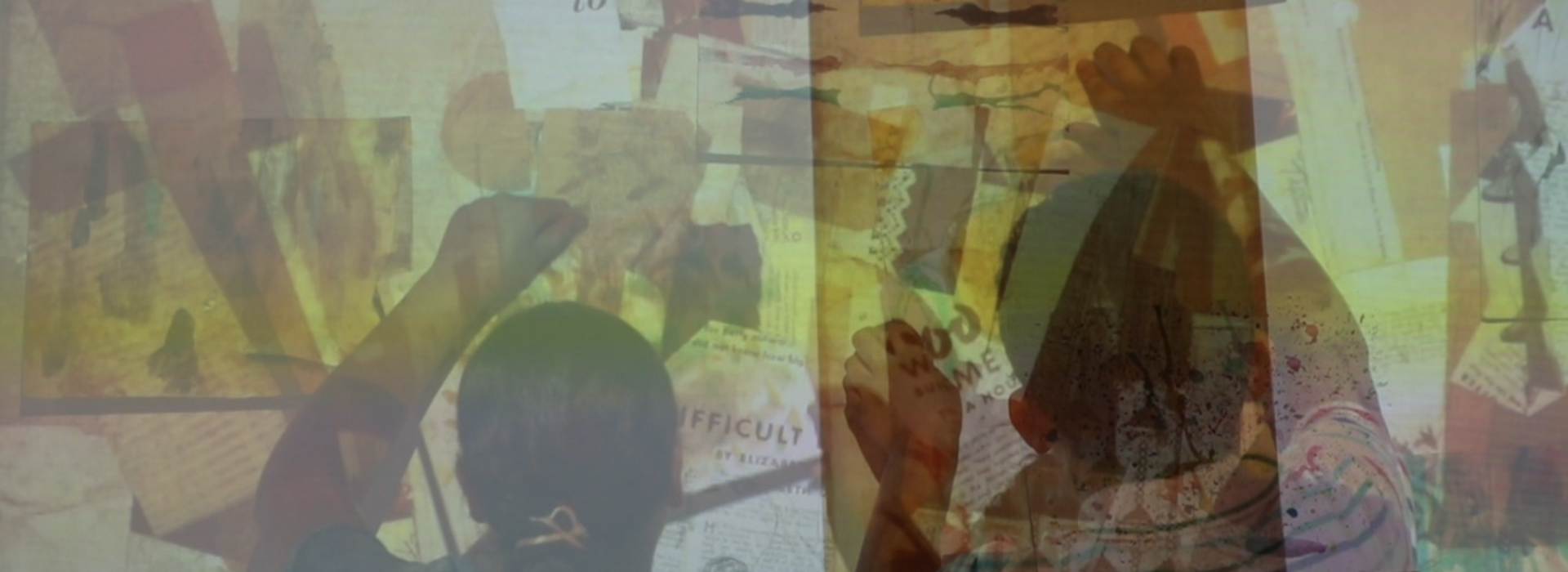
Sad and angry faces, frustrated students and drawings that silently find their way into the trashcan. “Teacher, my drawing is ruined!” it sounds at least once every class through the art room at the Imelda School.
My students are so focused on a beautiful end result, that they linger in the moments where things go wrong. They want to create something that they like and they can be proud of. In other words; they want to be competent and able to meet their own expectations. According to the self-determination theory of Deci & Ryan (2004), all people share this desire for (psychological) growth. This is based on three basic needs: autonomy (doing it yourself), connectedness (belonging) and competence (successful experiences).
The pursuit of competence is a good example of intrinsic motivation. This type of motivation is based on the individual need to be able or willing to do something well, and the success achieved is sufficient reward. The opposite of the spectrum is extrinsic motivation, which is based on external stimulation (Beemen & Ekelschot, 2010). Avoiding punishment or failure is a good example of this. Molina (2019) even states that “we live in a trophy generation in which failure has to be avoided at all costs.” According to her, this leads to failure avoidance. She describes this as “doing things because you have to and you don’t want to lose face”. Students are afraid of failure and prefer to avoid making mistakes while they have to learn that effort is required to become good at something.
Hi! My name is Alex and I’m a graduate of the Fine Art and Design Teacher Training. Over the past four years my passion for education and art have merged into a very distinctive vision. I believe everyone is capable of creating art.
Within art education, the focus is often on teaching concrete, verifiable things (Foley, 2014), while art education lends itself well to teach students to think like artists. Artists experiment, test theories, ask ‘what if’ questions and welcome failure because they can learn from it.

Prototype 1 – Class Discussion
I want to know what my students think of the words “ugly” and “beautiful”. We make word webs and play a kahootquiz. The kahoot contains images of various artworks to which students can respond. The question for each artwork is: “Do you think it is ugly or do you think it is beautiful?”. We discuss the results of each question; why does the majority/minority find this work beautiful/ugly? What do we (think we) see? What is it about? Do you like it better/do you find it uglier if you know who made it? Or if you know the meaning behind the artwork? This leads to very open and amicable group discussions. Some students say that they like Karl Otto Götz’s work because they can see all sorts of different things in it. The work of Philip Akkerman is met with a lot of laughter. Most students think it’s really ugly and weird because it has strange colors. When sharing their opinions, my students respond respectfully to each other. They learn that when we look at art that different opinions and truths can co-exist.

Prototype 2 – Make your own ugly art
Ugly. It’s the last thing anyone wants to hear about their artwork. But what if we make that the goal, make something ugly. So there is no avoiding the failure, but only welcoming it! This way they hopefully experience less pressure to meet their own high standards of what their artwork should look like. Hopefully this leads to more openness and experimentation. Based on their word webs and answers in the group discussion, we create a list with ideas for ugly art.
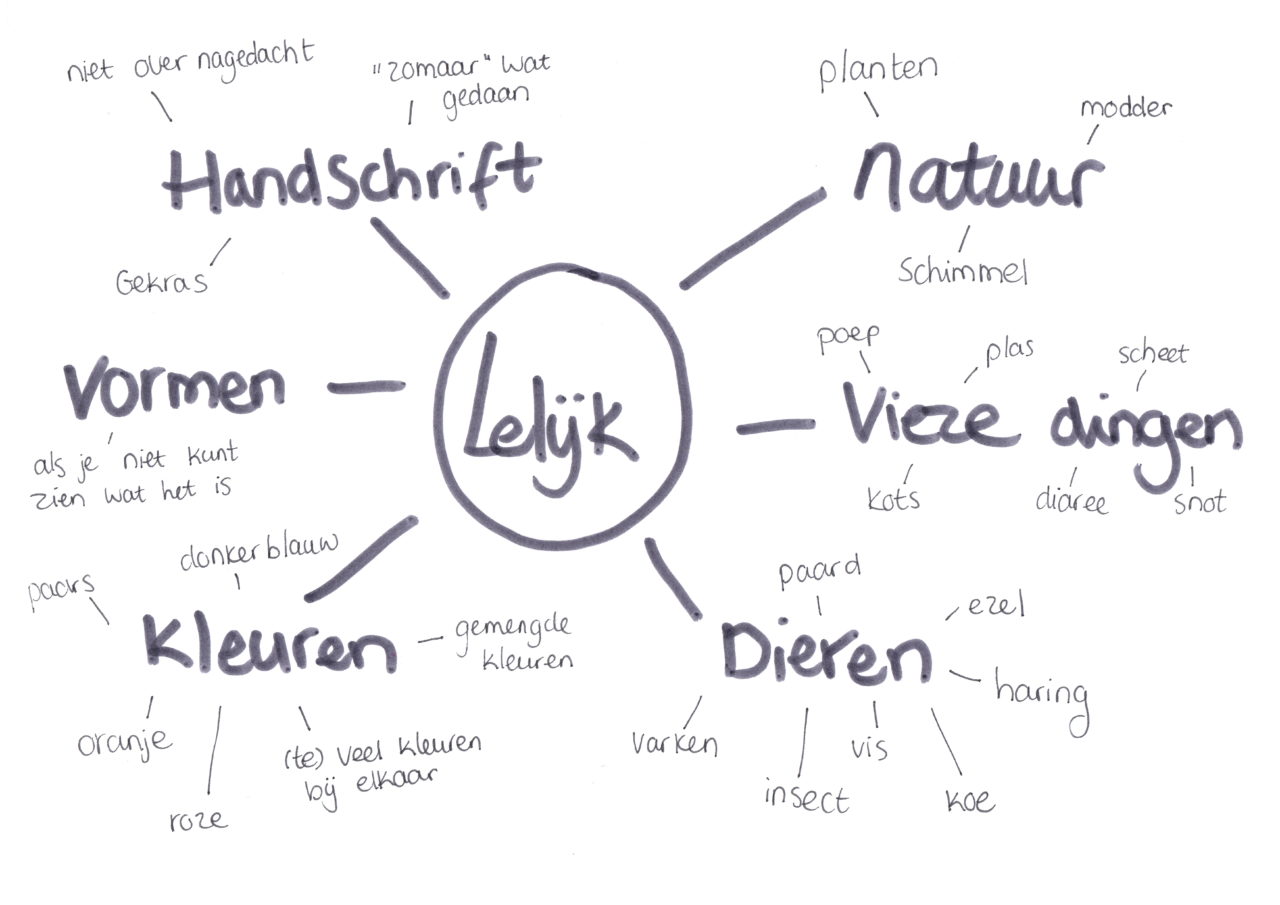
The only requirement is that the artworks must be ugly, whatever that means to the students. This leads to different reactions. Some students indicate that they feel very free because they are allowed to “just do something”. This leads to them experimenting and making new discoveries. Sara from 3rd grade (groep 5) explains for example that she has chosen two colors that she finds very ugly. But by mixing these together she thinks the combination is beautiful!
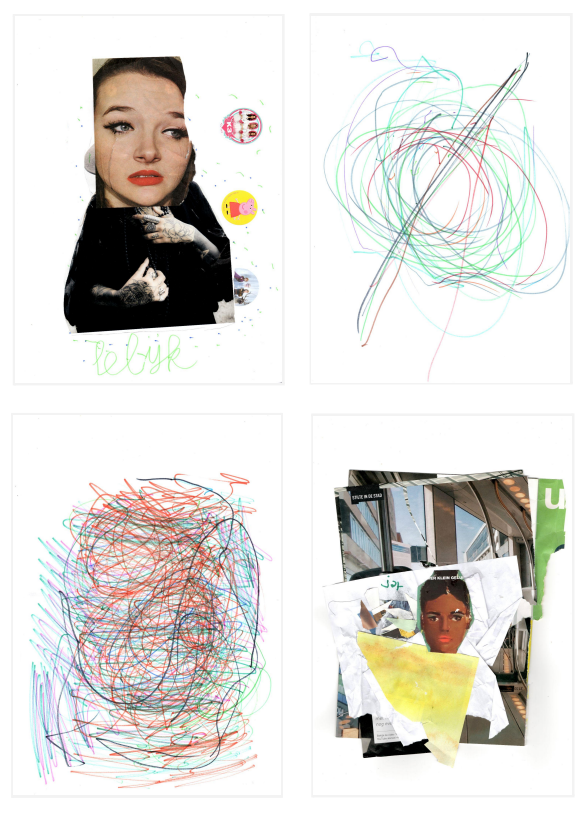
Prototype 3 – Painting Classes
In my painting classes I give small pieces of theory about different painting styles with 1 or 2 examples. I ask my students to name what they see and we discuss their answers. Then they experiment themselves. They get to decide what to paint, as long as it fits the style we’re covering. I think it is important that they learn to trust their own choices. Most students ask me if they can make something ugly again. I think there’s a certain joy in saying that you’re going to make something ugly and then surprising yourself with something that’s accidentally beautiful!
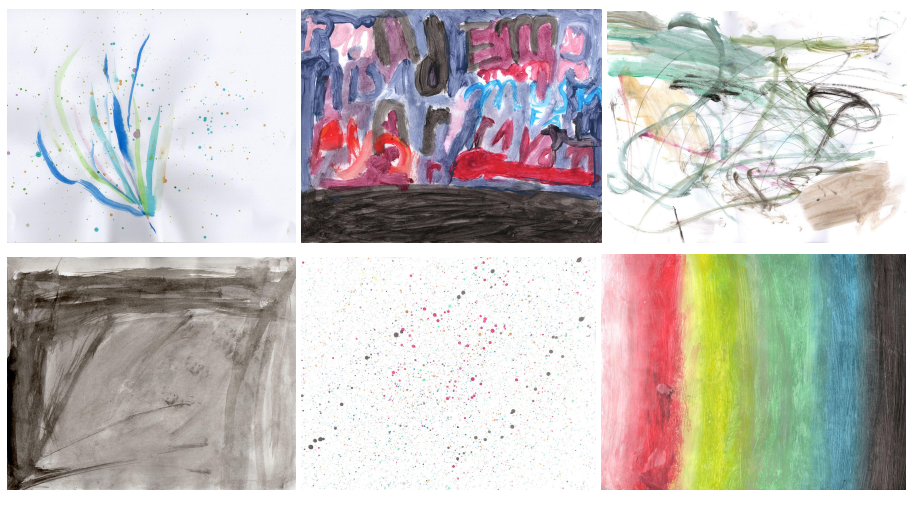
Some students’ paintings remind me of artworks I know. I share this with my students to encourage them to keep experimenting like “real” artists do. I show them the original work of art on the projection screen. Younes from 4th grade (groep 6), for example, makes an abstract painting that reminds me think of Kandinsky’s work. When I show this to him he spontaneously holds his artwork in front of the projection screen. As a result, his work becomes part of Kandinsky’s work. This beautiful gesture turns into a beautiful picture and so I repeat this with a number of works by other students.
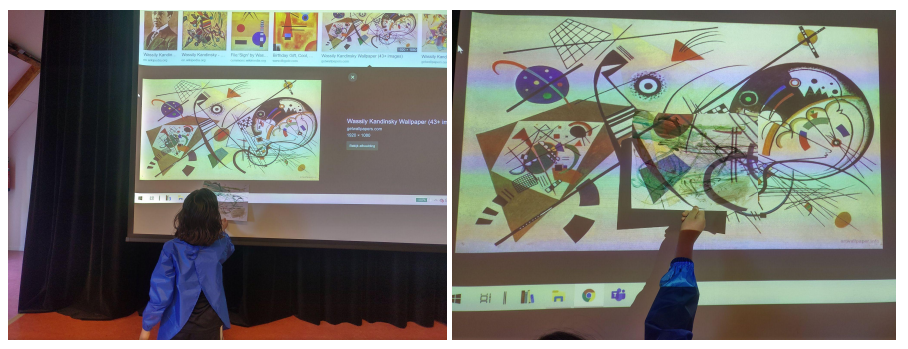

Prototype 4 – Collages and Projections
Experiment 1.0
Thanks to Younes’ spontaneous action I came up with the idea for prototype lesson 4. I ask my students to create a visual response to work by Kurt Schwitters. I’m intrigued by Schwitters work because he uses unconventional materials in his collages. Because of the layers he provides the viewer with, there’s always something new to discover when looking at his work.
I divide the class into 4 groups. Each group reacts to a different part of the same work: one group reacts to shapes, the other to colors, the third to patterns and the last to lines. When their reaction is complete, I ask them to hold their works, per group, in front of the projection screen. This way their works become part of Schwitters’ work and adds a new layer to the collage. I capture this in photos.
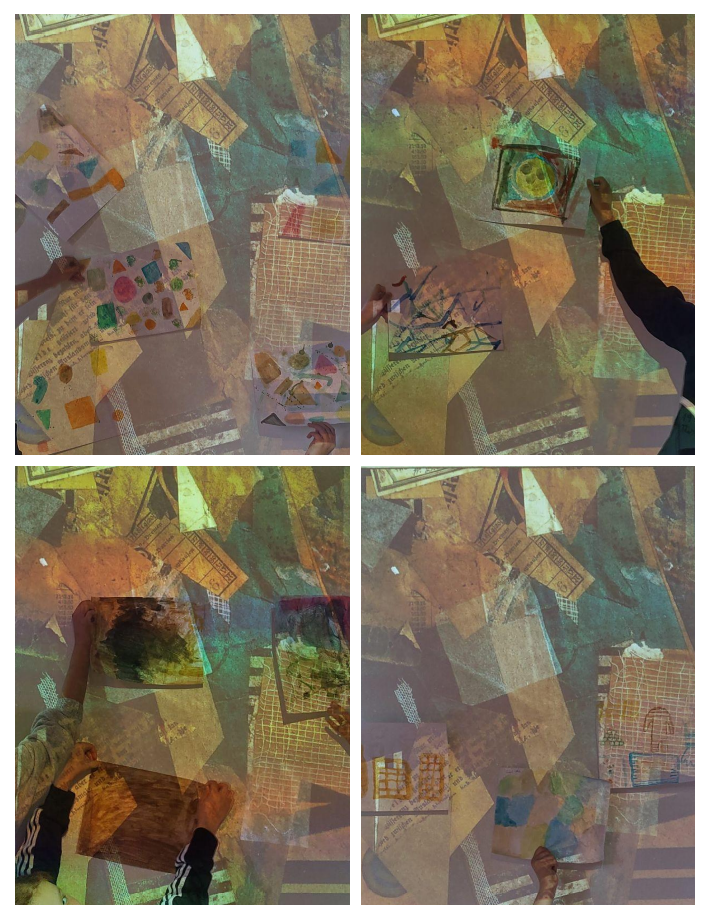
Experiment 2.0
Because I now have photos of small groups per class, this comes down to a sea of multiple different images. While looking at these images I find it unfortunate that the works remain separate from each other in this way. That’s why I decide to create one big collage per class with the work they made in Experiment 1.0. I capture this in photos again.
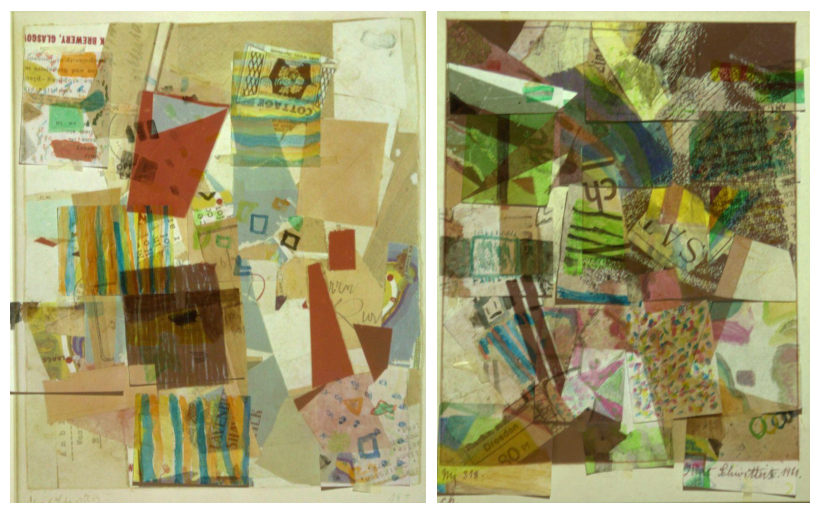
I ask my students to look closely at their own artwork and that of Schwitters. With the question “If you were Schwitters, where would you add your artwork in this collage?” in the back of their mind, they get to choose a place to put their artwork on the projection screen with masking tape. I urge them to look closely at what happens to the image every time additions are made. This way they learn to look, make choices and respond to what their classmates are doing.
When I ask them what they see at the end of the assignment, Hideya from 5th grade (groep 7) says: “I see a unique work of art. I’ve never seen anything like it before.” Ryan from 5th grade (groep 7) adds: “The shadows of the paper makes it look like a 3D work of art.” Selma from 4th grade (groep 6) answers my question with “You can’t really see what it is anymore. That makes it very exciting.” Kebron from 3th grade (groep 5) proudly mentions: “We have created an abstract work of art together!”
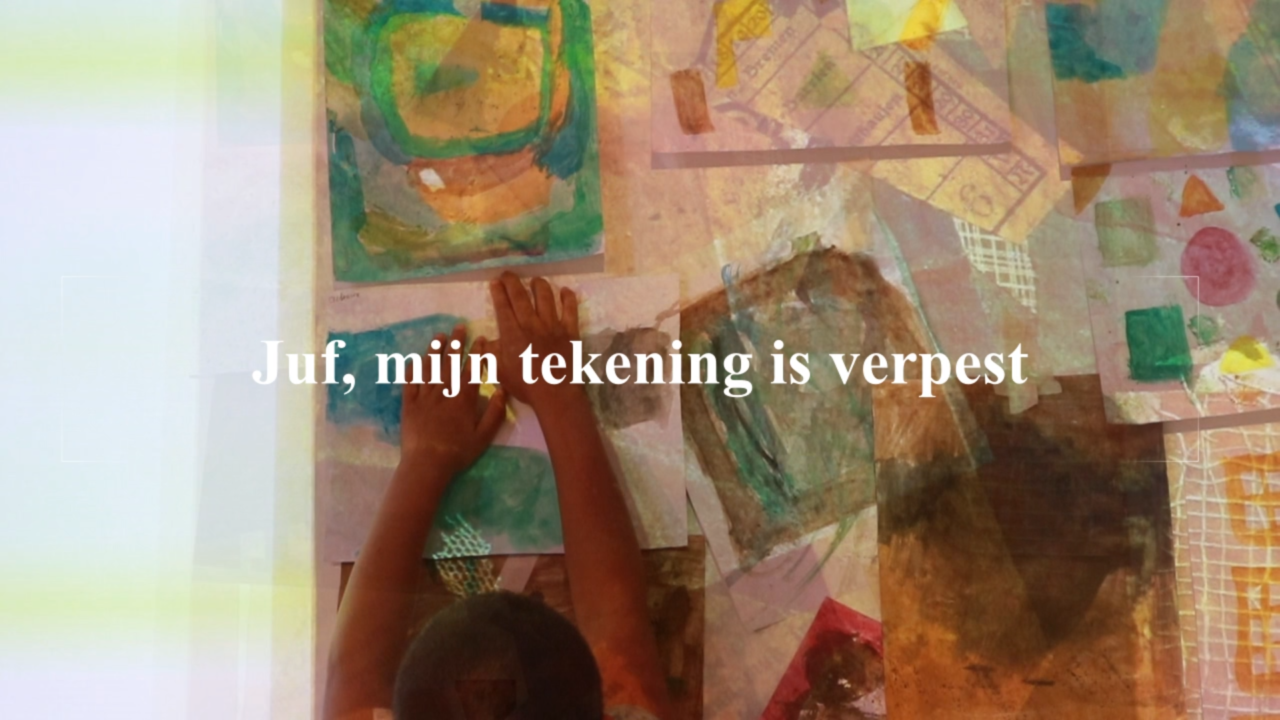
In conclusion
Students with a fixed mindset may have difficulty with art classes. They have high expectations of themselves and want to be able to create something beautiful the first time they try to. When this fails, they see it as a failure of their own. They don’t want to feel that way, so they don’t start at all. This is a clear example of failure avoiding. In the end these students find little or no pleasure in art classes. Therefore it is important to take into account the mindset and motivation of students. It is also important to compliment the students on their commitment, motivation, input, and way of working. This positive approach stimulates their intrinsic motivation, without an emphasis on the products they can produce.
In addition, it appears that assignments in which students are challenged but also have enough personal freedom of choice work best to get and keep them motivated. This contributes to their willingness to experiment and play as artists do. Art assignments with an open ending are experienced as a low-threshold and the students have a high chance of success. This ensures that the need for competence is met. It has also been found that assignments in which students are allowed to share their opinion are experienced as pleasant. They like to tell what they see in works of art and what they think of it.
“Teacher, take a look at my artwork” it sounds through the art room during many of my classes. My students are focused on the assignments, in which experimentation is a central theme, and amaze themselves with what they can do. Sometimes a crumpled work of art disappears into the trash can, but then the student starts again with determination. I see more and more relaxed faces, concentrated students and works of art that they proudly show to anyone who wants to see.